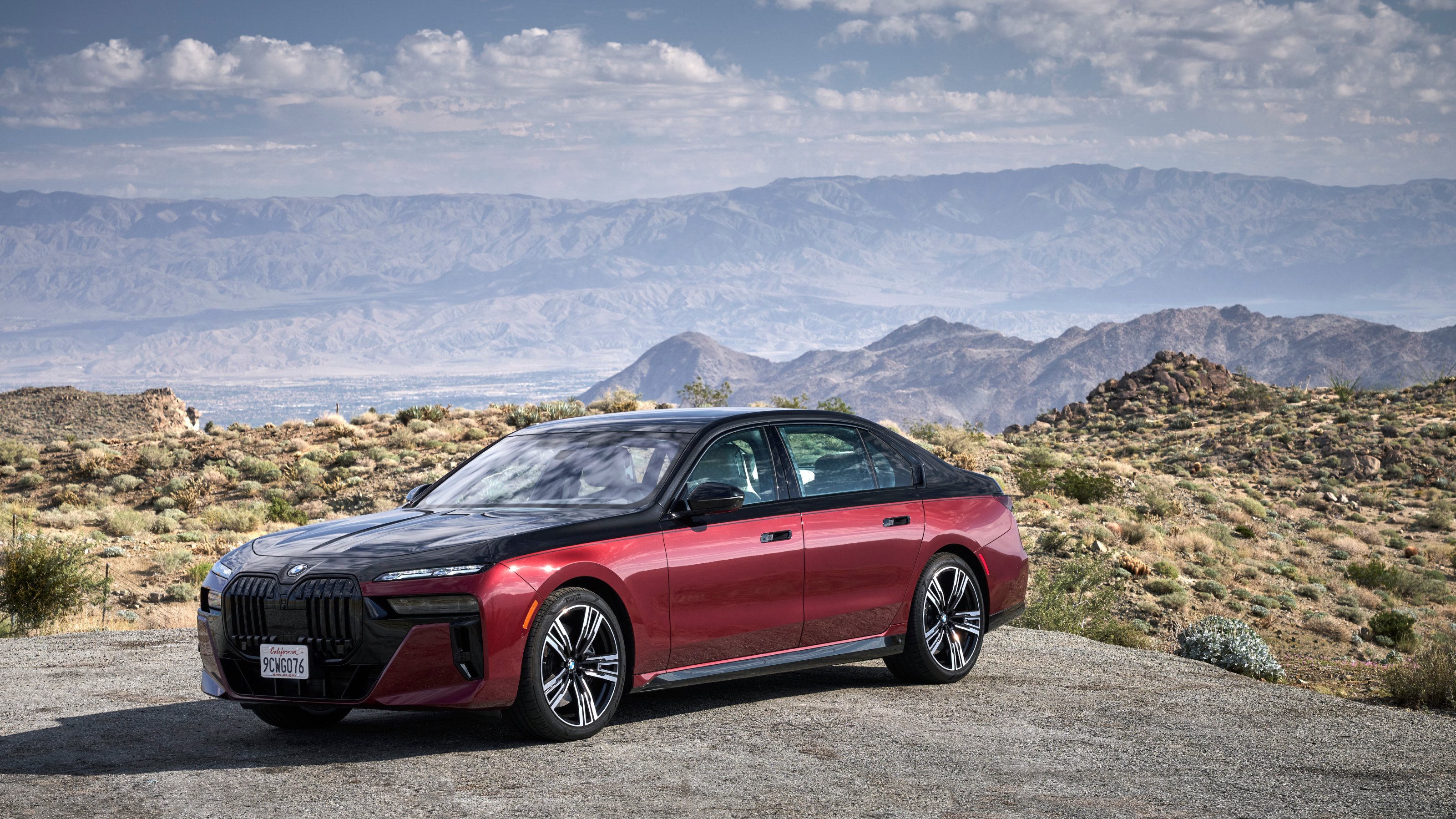
There are plenty of ways that the most plutocratic of automobiles can signal their emphasis on the driven, not the driver. There’s the division screen, of course (a Rolls-Royce favourite), as well as the sumptuous, first class-style reclining chairs that set Maybachs and Bentleys apart from the ‘standard’ bench seat. The new BMW i7 has neither of these. Instead, it has the largest rear screen ever installed in a production car.
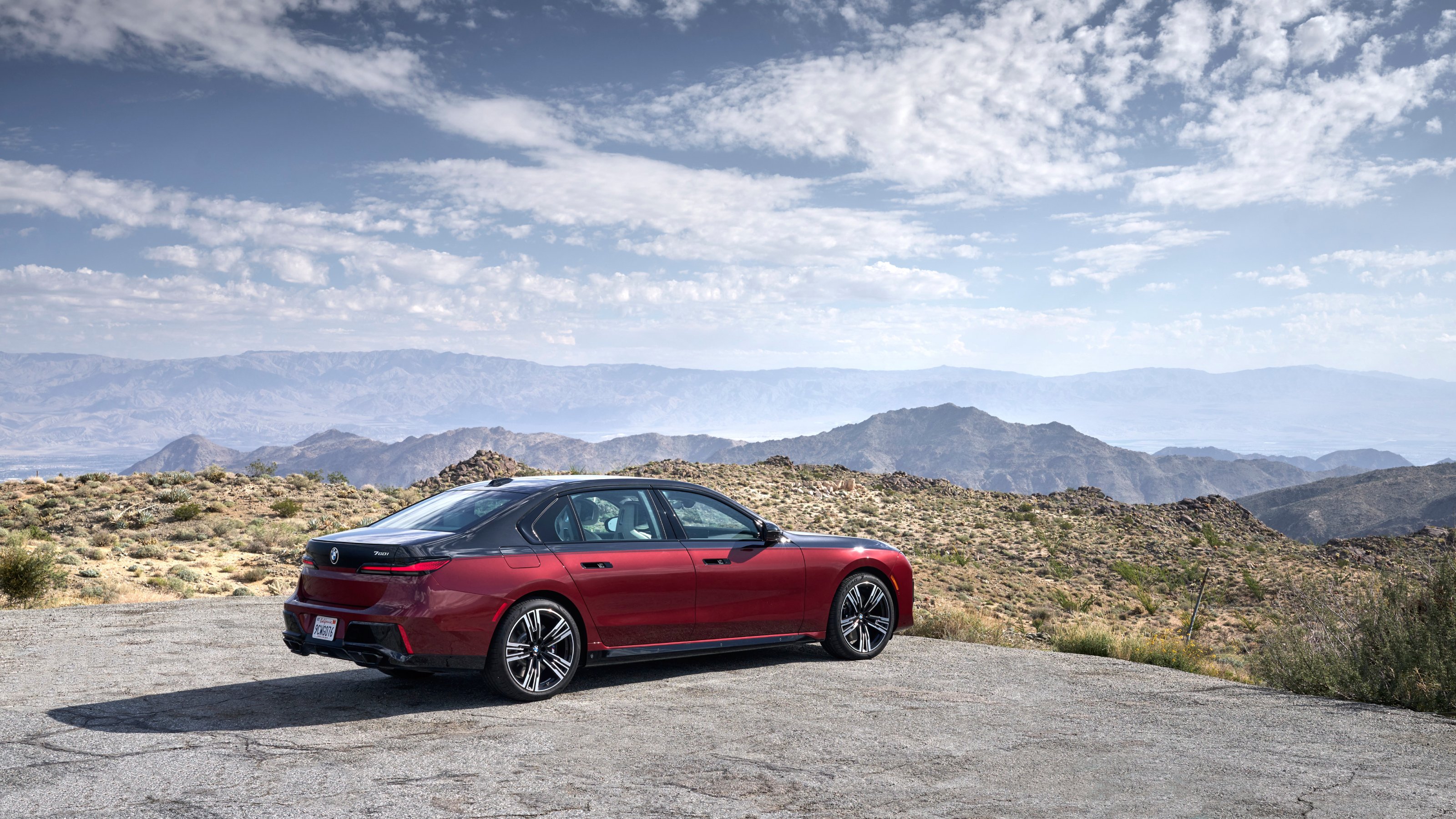
The BMW i7 marks another premiere for the Bavarian car builder. It’s the first time an all-electric powertrain has gone into a traditional saloon-style body. Up to this point, BMW has focused on electric SUVs, as well as the i4 ‘Gran Coupé’. The i7 won’t hold this distinction for long, as the new i5 saloon has just been announced.
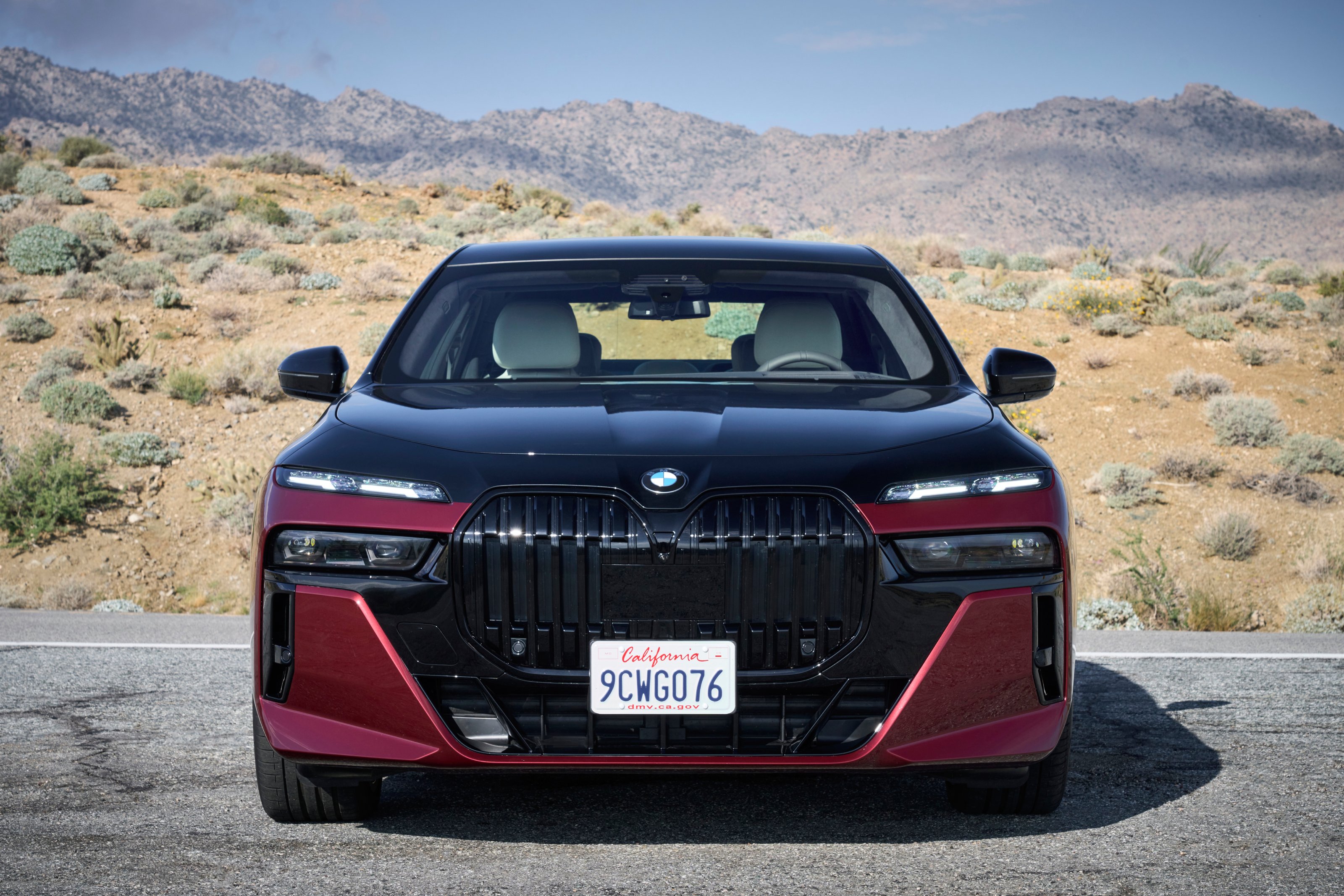
The 7-Series is the brand’s traditional flagship, first introduced in 1977. A rival for Mercedes’ well-established S-Class the 7-Series followed the same top-down technological flow; any innovations make their debut in these prominent models before gradually percolating through the range. In BMW’s case, that first ever 7-Series included such exotic items as an onboard computer, anti-lock brakes, and even a dictaphone.
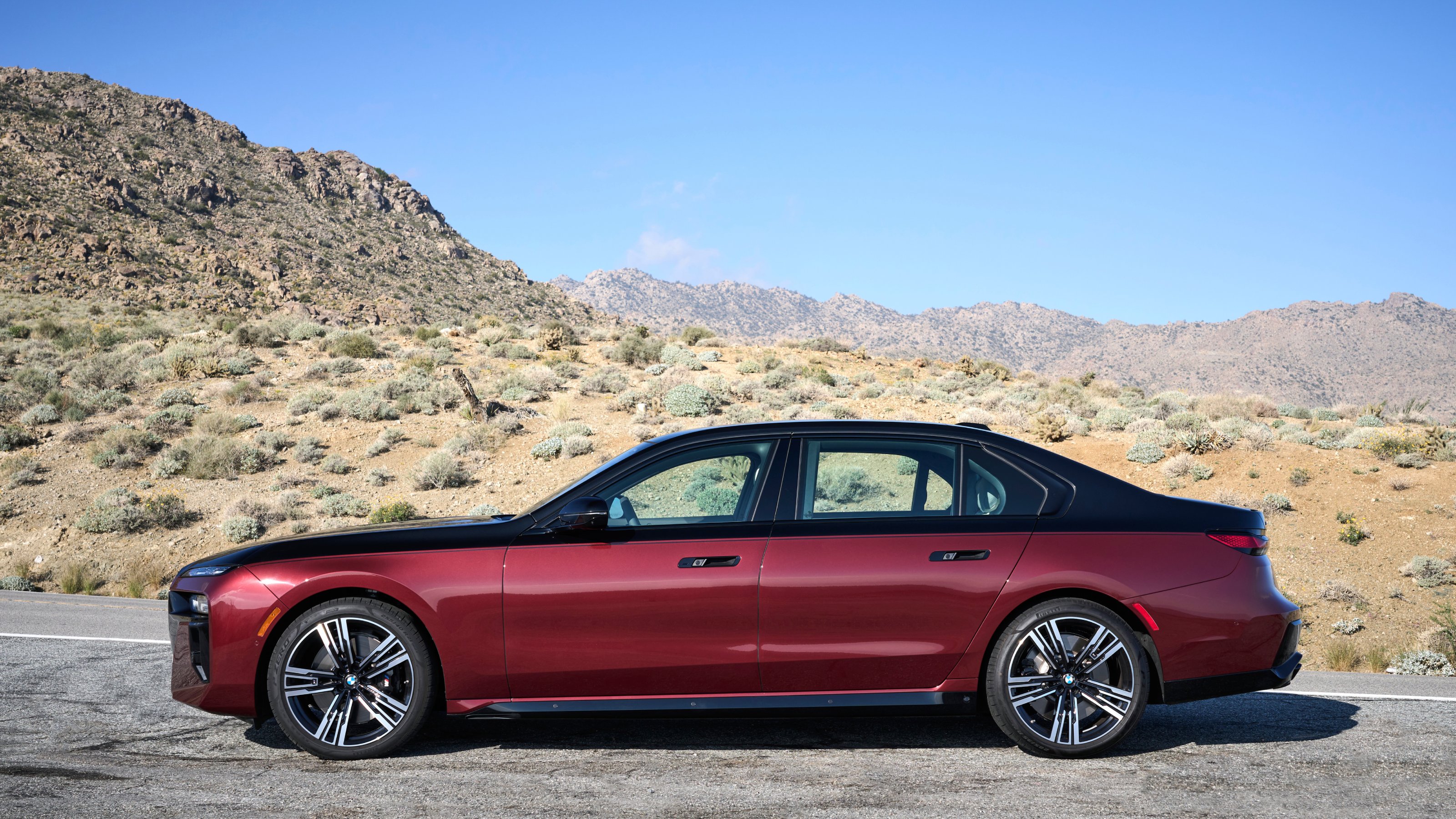
Seven generations later and the big 7 has reached a fork in the road. Just like Mercedes, which is hedging its bets between a hybridised S-Class and the all-electric EQS, BMW believes that the time isn’t quite right for the chauffeured classes to go all-electric, all at once. Unlike Mercedes, BMW is building the i7 alongside an almost identical ‘regular’ hybrid car.
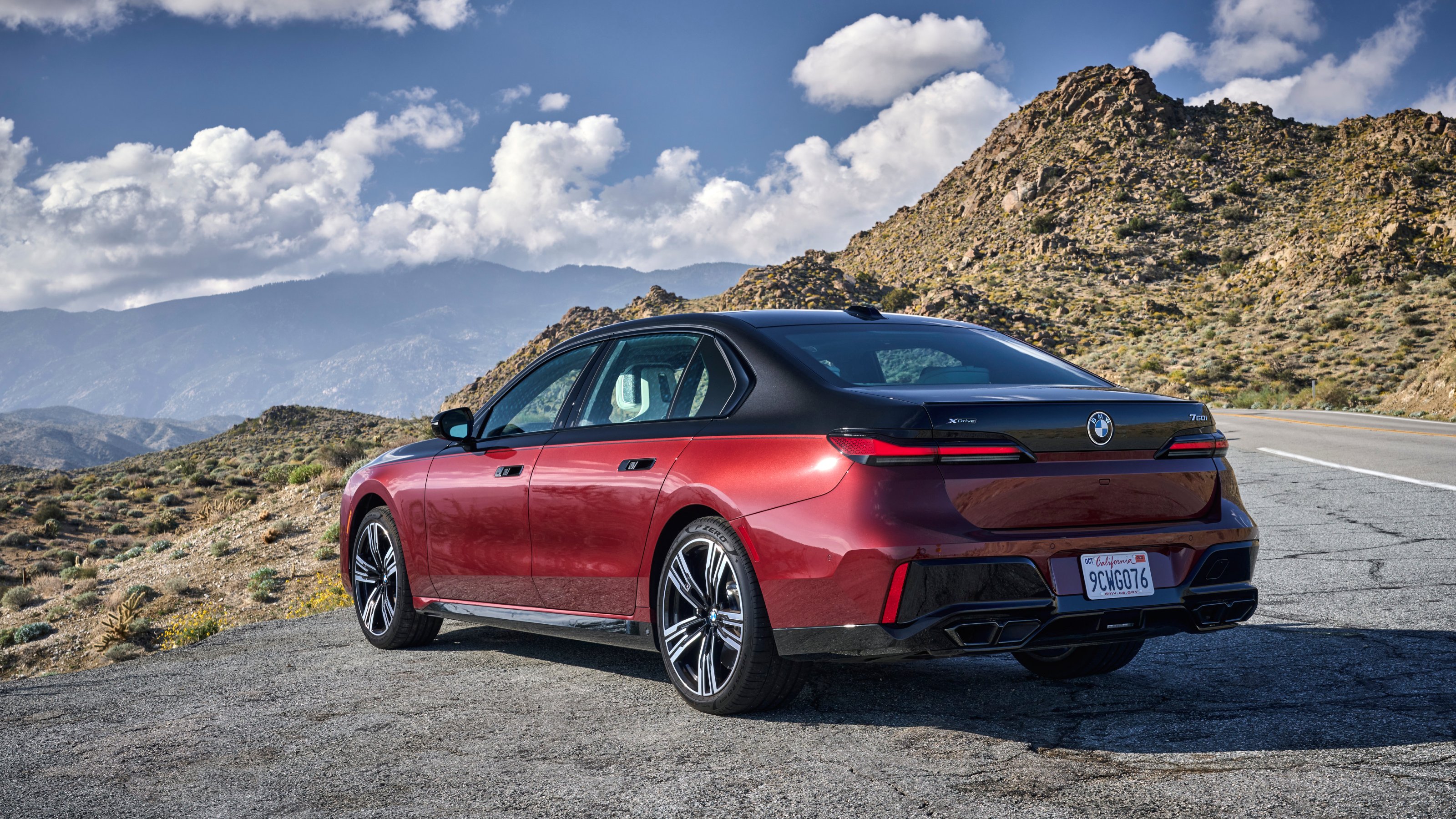
Despite converging EV and ICE styling, it pains us to report that the i7 is not a thing of great beauty, even (especially?) with its optional two-tone paintwork. BMW design can make a virtue out of brutishness, a strategy that sometimes pays off in the long run as tastes change and the avant-garde bubbles up into the mainstream. Yet where the i3 and i8 combined asymmetric forms and unconventional panel alignments to great effect, more recent models have struggled with the blend of esoteric detailing and conventional proportions.
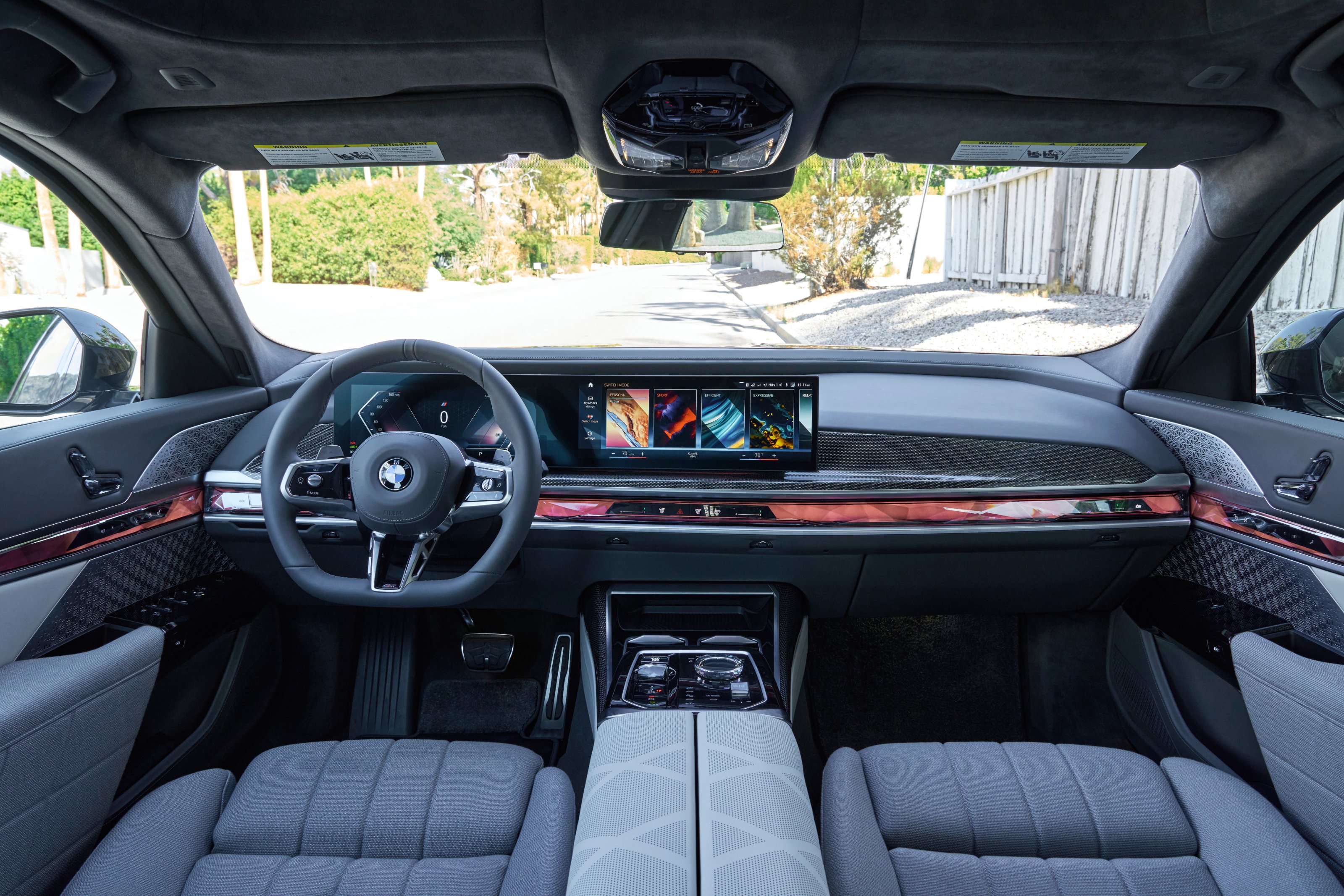
On the other hand, BMW’s current approach to interiors is far more satisfactory, even if there are still too few physical buttons for our tastes. There’s an emphasis on pattern and texture, with everything from fascia inlays to speaker grilles creating an interesting and unusual surface, while the lighting and materials (premium cloth is available as an alternative to leather) setting up a warm and cosseting interior that doesn’t feel too dominated by screens.
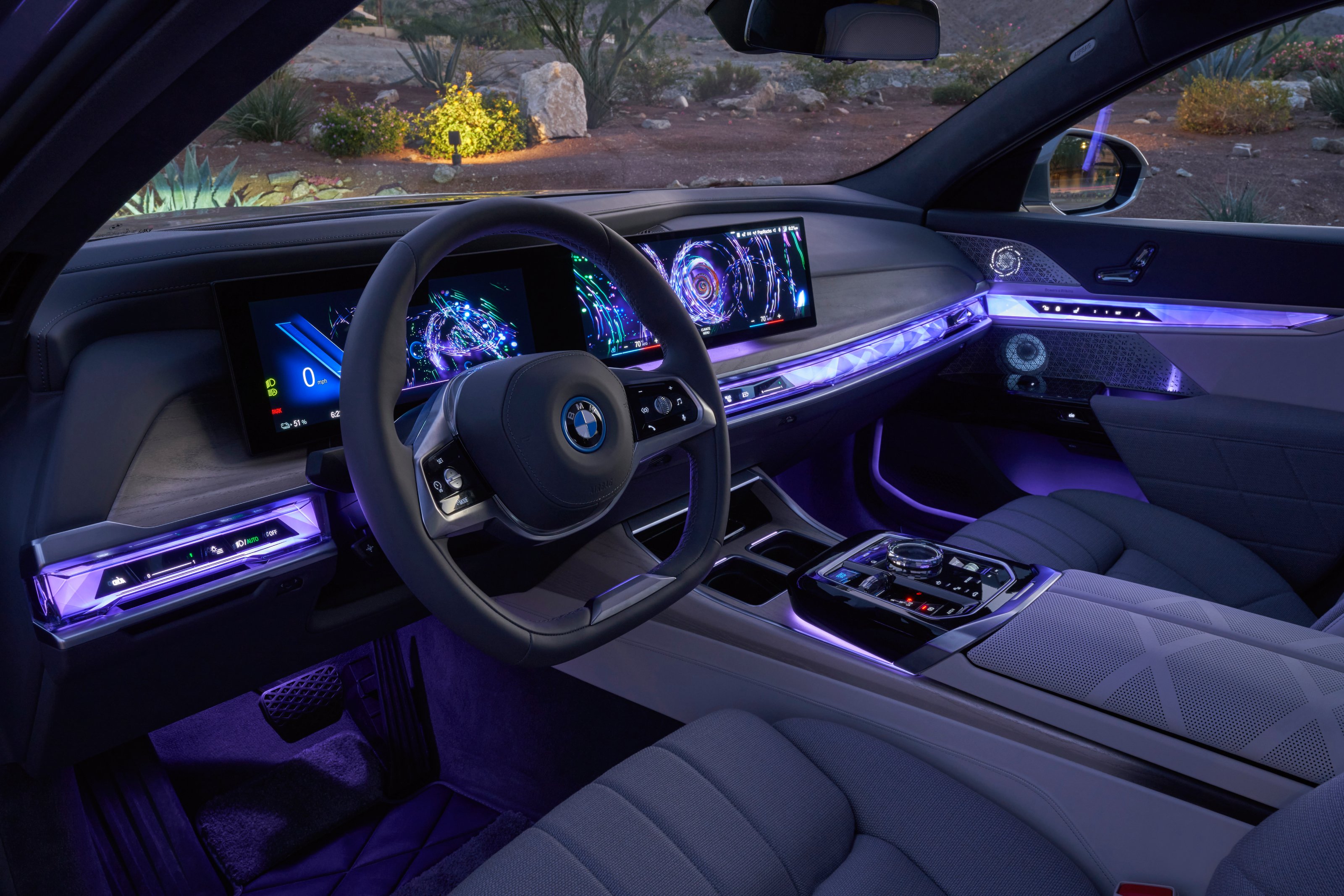
Electronics are still doing a lot of the heavy lifting, particularly in the plethora of lighting modes that give the interior what BMW calls a ‘luxurious lounge atmosphere’. In practice, this means swirly graphics on the central screen, soft ambient tones and hidden LEDs casting a variety of hues from behind and beneath practically every surface, from the crystalline dashboard inserts to the pattern inset on the roof glass.
BMW i7 electric saloon and its 31.3in ‘theatre screen’
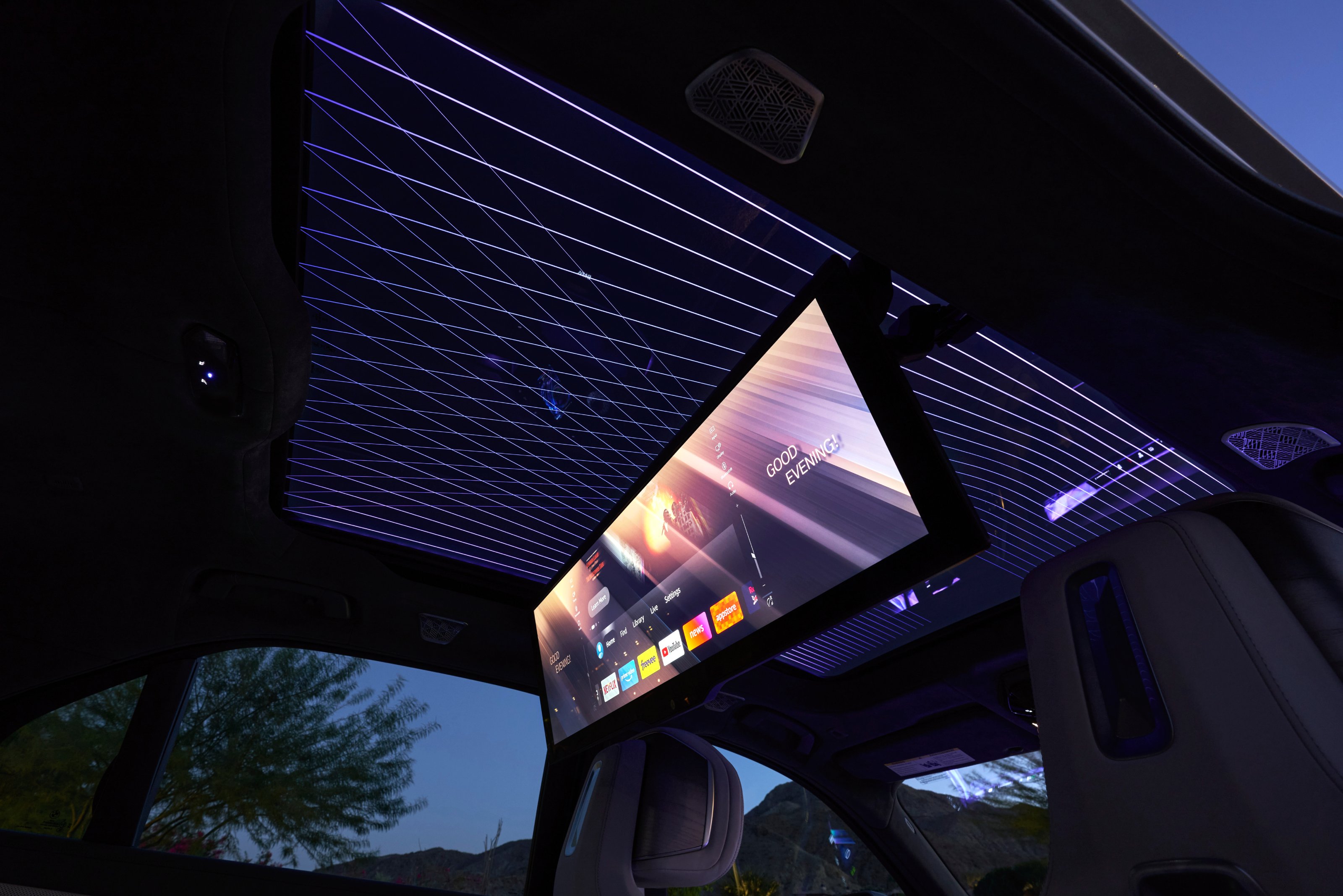
As already noted, the i7’s pièce de resistance is the ‘Theatre Screen’, an optional extra that gives rear passengers a fold-down 31.3in widescreen display. The screen, available as standard on the Excellence Pro and M Sport Pro models, is also available as a £4,400 extra across the i7 range.
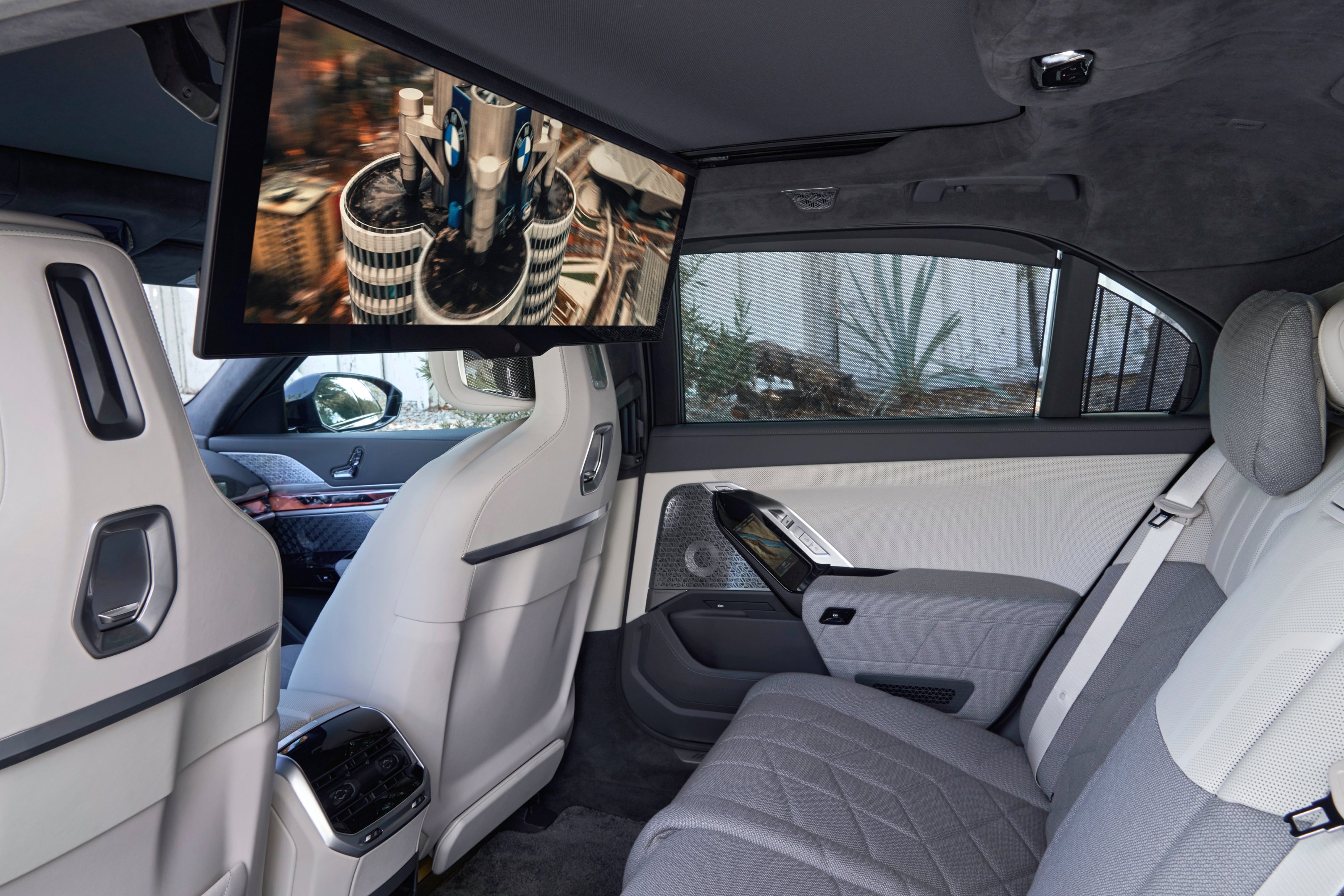
With 8k resolution and touch-operation, it also has an HDMI input for computers, games consoles and Apple TV, with Amazon’s Fire TV system baked in. Each passenger has a touchscreen built in to the rear door to help them navigate this brave new world. Switch the system on, and you’re greeted with a short order of Hans Zimmer’s trademark cinematic pomp, as the rear blinds rise in sync with the vast screen’s descent.
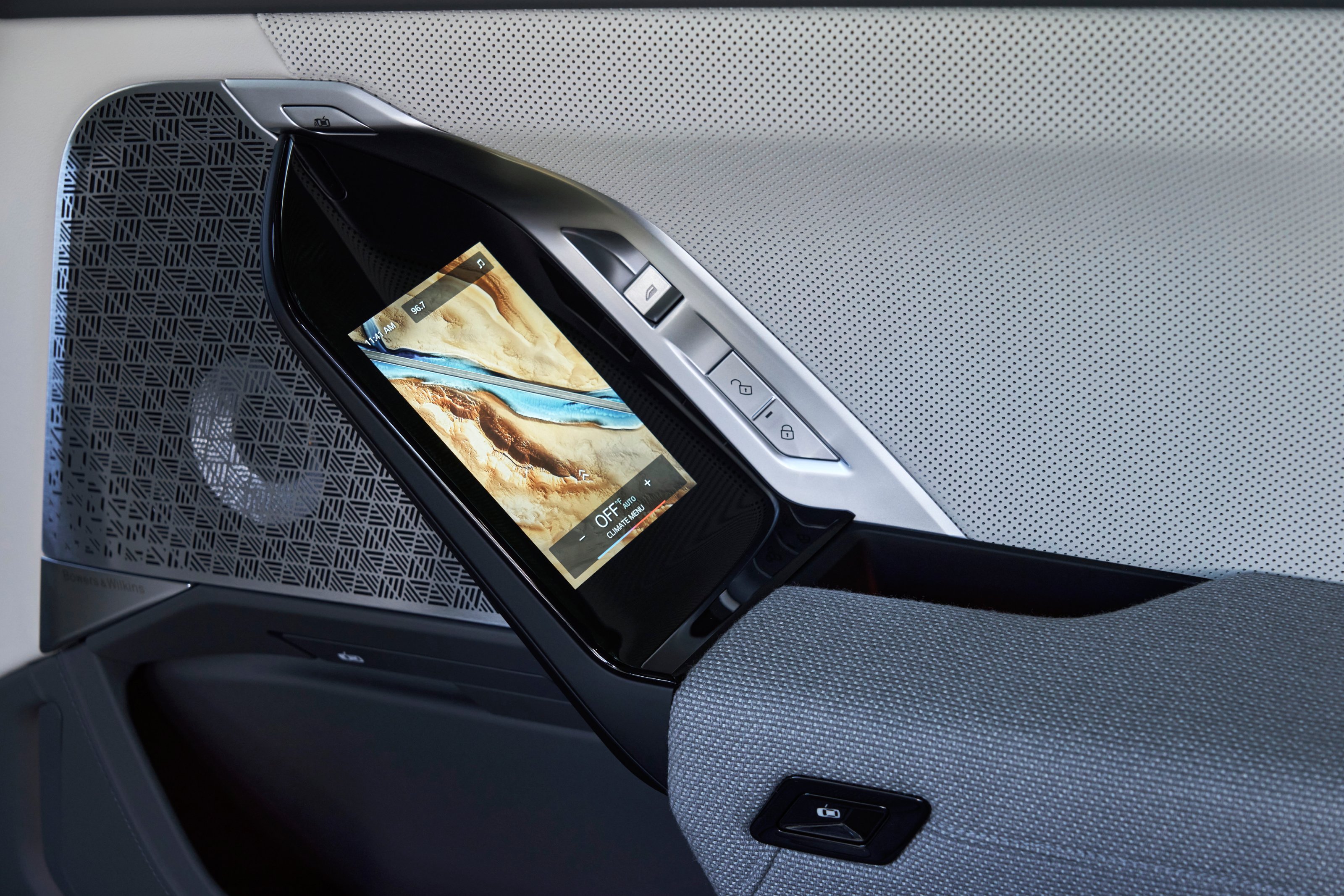
The i7 has a lot of tech to take on board, but as your familiarity with the car grows, you’ll be increasingly on speaking terms, as many of the operations are more easily spoken as commands than activated through the screens – ‘close the blinds’, ‘lower the screen,’ and so on.
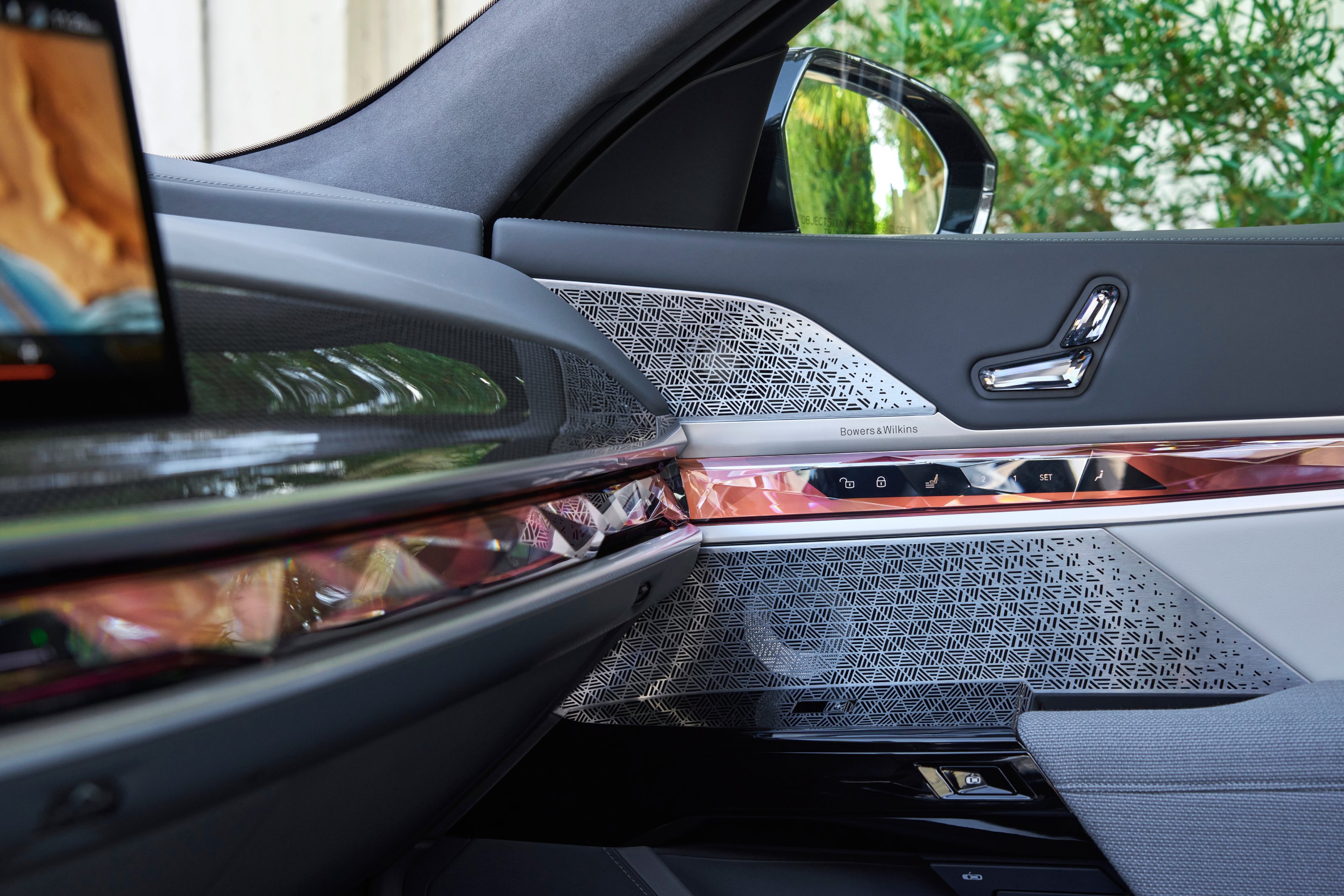
It’s a big car – 5.4m long – so the array of sensors, self-parking systems and optional four-wheel steering are all hugely welcome. Scale also means a sizeable battery pack, with an official range of between 360 and 387 miles, depending on the specification. That means a realistic real-world range of 300 miles, which staves off range anxiety on all but the longest of journeys.
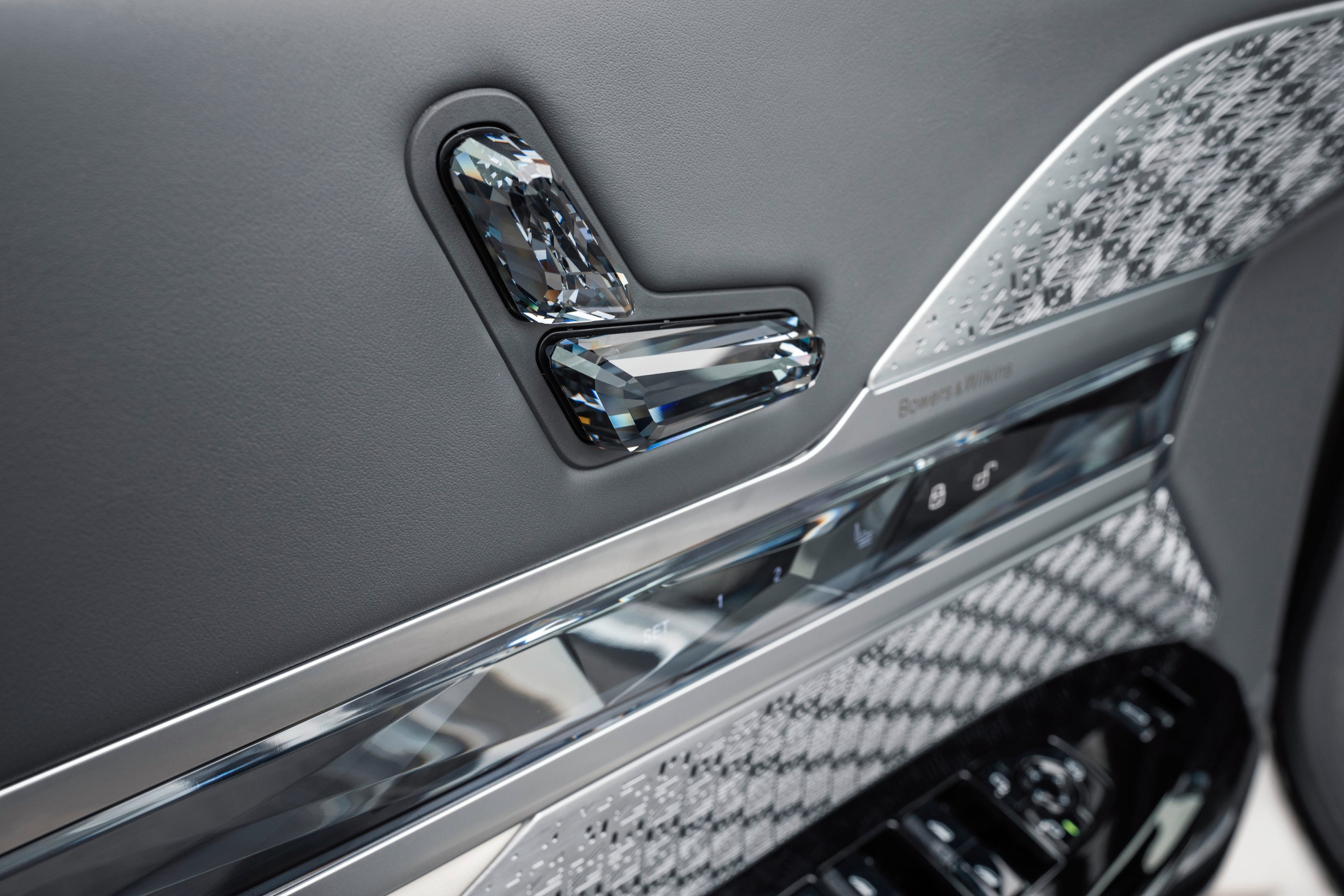
The powertrain puts out 400kW (equivalent to 544hp), so a sub-five-second sprint to 60mph is easily attainable, with all-wheel drive keeping the car sure-footed at all times. There’s also an i7 M70 variant, which has been given the once-over by BMW's M Sport Division, shaving a second off the sprint time and with more responsive, tighter steering.
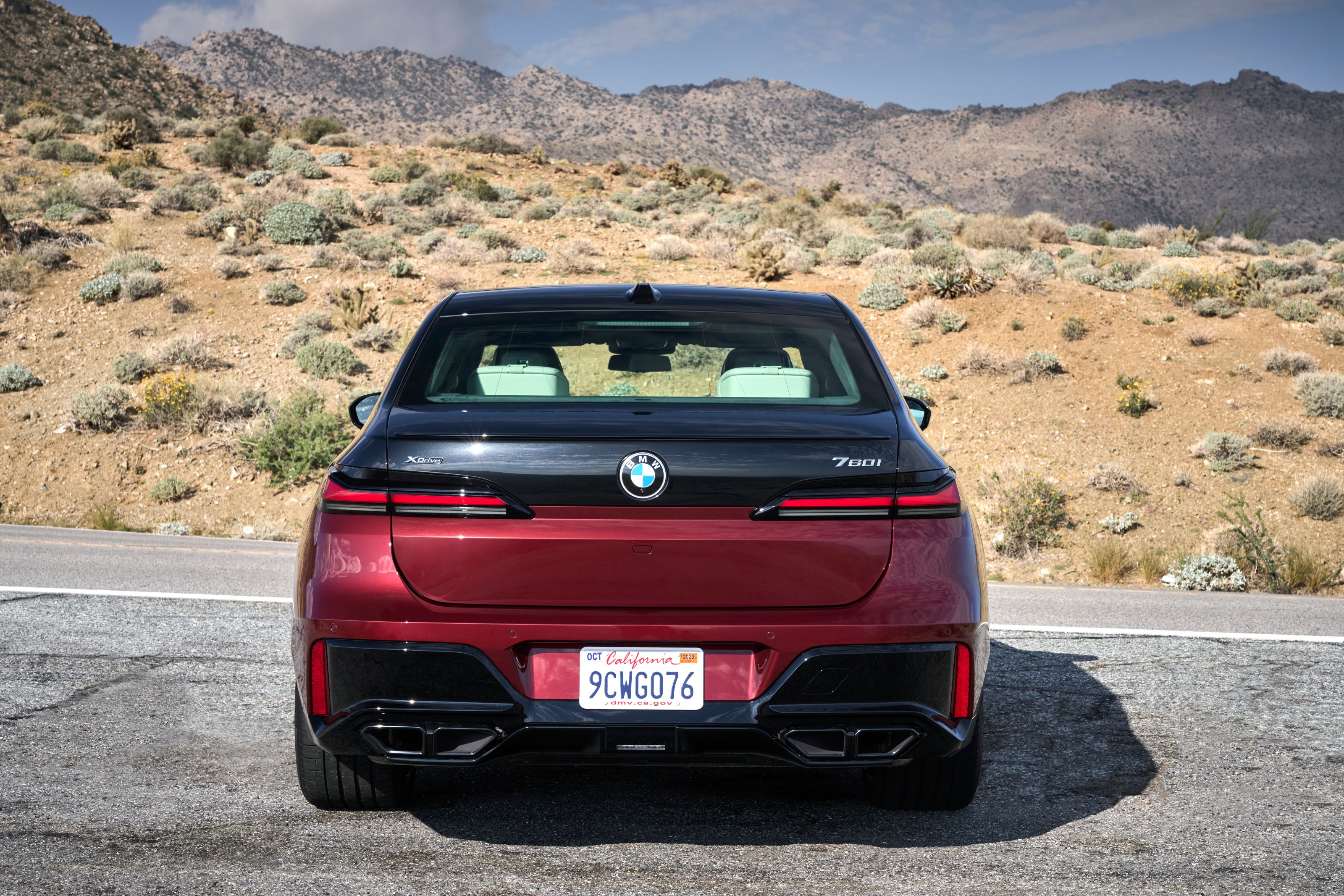
BMW’s famed tagline, ‘the ultimate driving machine’, matters less in this tiny niche of chauffeured isolation. Whisper-quiet and uncannily smooth, the i7 does a superb job of blotting out the outside world and making a journey speed by. Your only problem is to decide what to watch.
BMW i7 xDrive60 Excellence, from £113,970, BMW.co.uk






